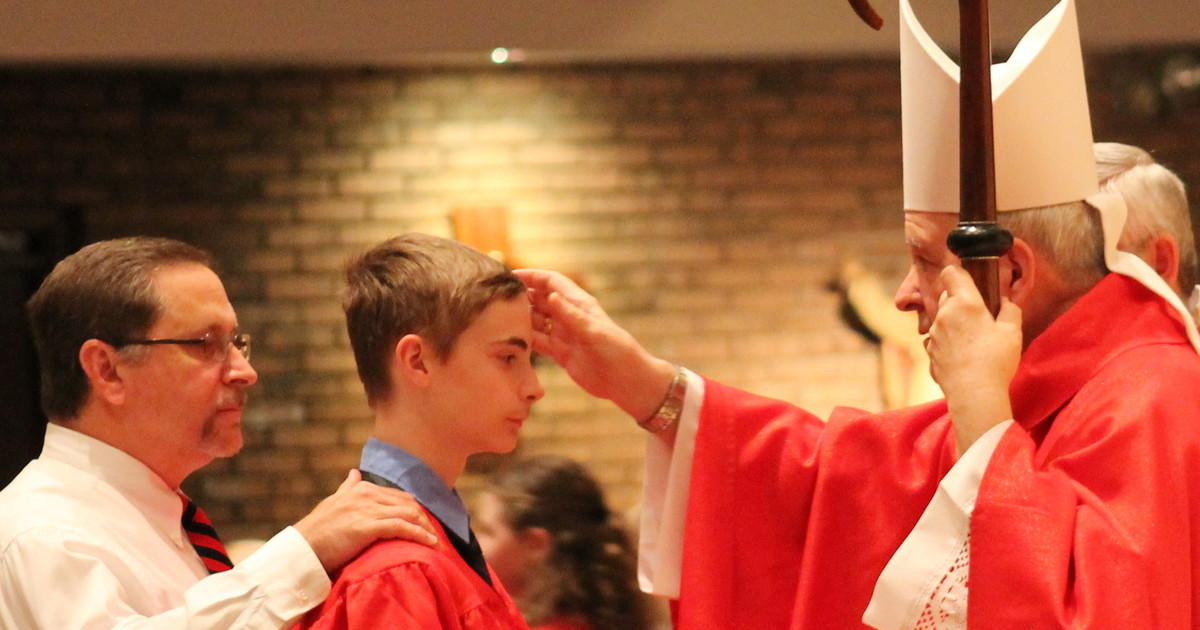CONFIRMATION AND THE PASCHAL MYSTERY
CONFIRMATION
AND THE PASCHAL MYSTERY
Pope St.
Paul VI spoke of the Sacrament of Confirmation as perpetuating the grace of
Pentecost in the Church. The Holy Spirit
is “the Lord, the giver of life,” as we say in the Nicene Creed. His presence at the beginning of creation is
noted in the second verse of the first chapter of Genesis: “and the Spirit of
God was moving over the face of the waters.”
He is what the tradition calls the Creator Spiritus, united with
the Father and the Son in creating the material world and giving spirit to man,
symbolized when God “breathed into his nostrils the breath of life” (Gen 2:7). The Spirit of God is prominent in the preaching
of the prophets and in the wisdom literature of the Old Testament. He is made more explicitly known in the New
Testament, beginning with the baptism of Christ, when he comes upon him in the
form of a dove.
The
Holy Spirit is the Lord and giver not only of natural life, but also of supernatural
life, especially by means of the sacraments.
The importance of his coming is emphasized by Christ in his last Supper
discourse: “I tell you the truth: it is to your advantage that I go away, for
if I do not go away, the Counselor will not come to you; but if I go, I will
send him to you” (Jn
16:7). The promise is fulfilled when
Jesus breathes on the apostles in his first post-Resurrection reunion with them
and says, “Receive the Holy Spirit. If
you forgive the sins of any, they are forgiven; if you retain the sins of any,
they are retained” (Jn
20:22-23). The Spirit is given
as the fruit of the Paschal Mystery. The
apostles are the first to receive the graces of Baptism, Confirmation, and Holy
Orders. The Holy Spirit is publicly
manifested fifty days later on the feast of Pentecost, when he descends among
them like a rushing wind, tongues of fire come to rest on them, and they proclaim
the wonders of God in foreign languages (cf. Acts 2:4).
The
people who hear Peter preach on Pentecost ask him how they should respond. He answers, “Repent, and be baptized every
one of you in the name of Jesus Christ for the forgiveness of your sins; and
you shall receive the gift of the Holy Spirit” (Acts 2:38).
The Church understands Confirmation as the sacrament that completes
Baptism. Initially, the two sacraments
were celebrated in the same ceremony, as they still are in the Eastern Catholic
and Orthodox Churches. The temporal separation
of Baptism and Confirmation in the Western (i.e., Roman Catholic or Latin Rite)
Church was a consequence of exceptional growth.
Many Christian communities were established in rural places and far-flung
regions, and more and more babies were being baptized, so that it became impossible
for a bishop to be present for every baptismal ceremony. Since Baptism is necessary for salvation it
could not be delayed. To preserve its connection to the bishop, and consequently
its visible apostolicity, Confirmation was delayed until a bishop was able to
visit. This connection is preserved in
the Eastern churches by the use of Myron for the anointing of the candidates. Myron is their name for what the Western
Church refers to as Chrism, olive oil mixed with incense that has been blessed
by a bishop.
Latin
Rite priests are required to confirm in the same liturgy those who are baptized
as adults. However, they may validly
confirm already baptized Catholics only by the delegation of their bishop. Eastern Rite priests must celebrate Baptism
and Confirmation in the same ceremony regardless of the age of the candidate. This diversity is enriching. According to the Catechism, “The practice of
the Eastern Churches gives greater emphasis to the unity of Christian
initiation. That of the Latin Church
more clearly expresses the communion of the new Christian with the bishop as
guarantor and servant of the unity, catholicity, and apostolicity of his
Church, and hence the connection with the apostolic origins of Christ’s Church”
(#1293). The Latin
Church visibly demonstrates the apostolic dimension of the sacraments for
non-baptized adults, or adults baptized in a separate Christian communion, by
having them participate in the Rite of Election and Call to Continuing
Conversion, which is presided by the bishop of a diocese usually at the
beginning of Lent. In this rite he
welcomes their candidacy for full initiation in the Catholic Church and prays
for the reception of the graces won for them by the Paschal Mystery of Christ.




Comments
Post a Comment